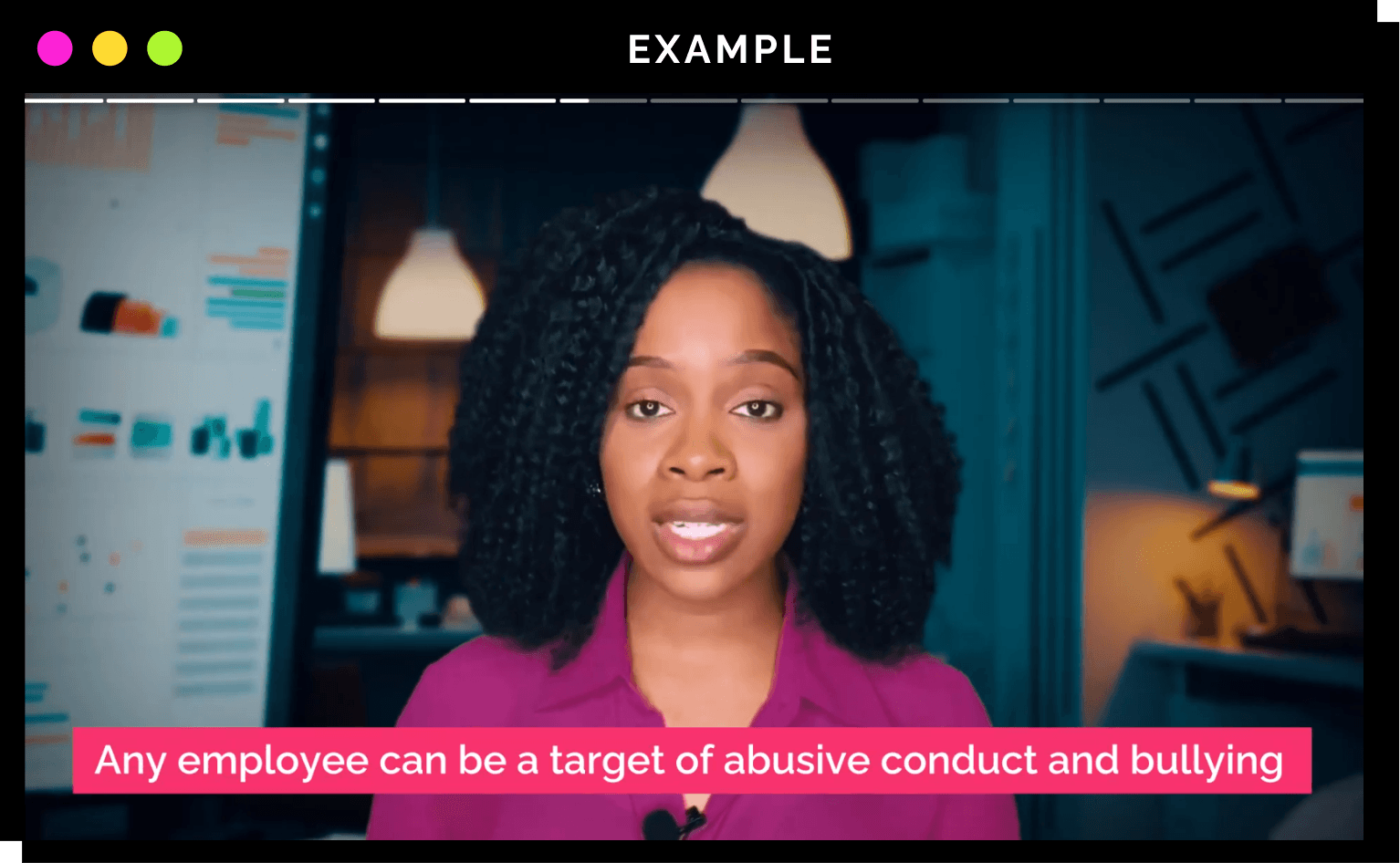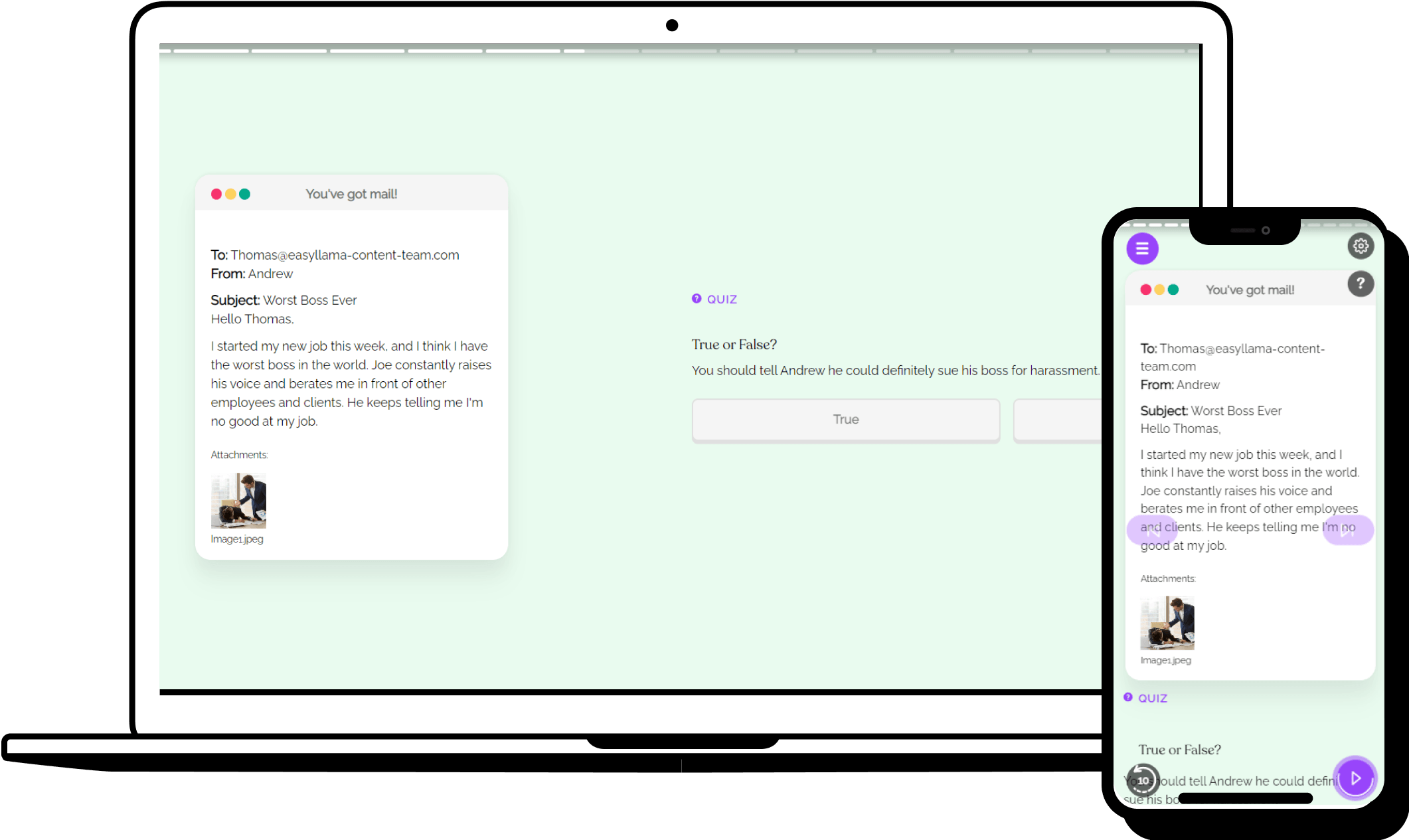Abusive Conduct and Bullying
This chapter will cover the definitions of abusive behavior and bullying, as well as the kinds of actions that may fall under these categories and their possible repercussions. We'll also look at how to stop these actions from happening in the first place and how to help people who have been the victims of bullying or abusive behavior. Finally, we'll talk about how to react to and deal with bullying and abusive behavior at work.

Impact of abusive conduct and bullying in the workplace

Bullying and abusive behavior at work can have a terrible effect on employees, harming them physically and psychologically as well as reducing their job satisfaction and productivity. It can also have a negative impact on morale and increase absenteeism, use of sick leave, and turnover rates. Bullying and abusive behavior can produce a hostile workplace environment that reduces productivity, raises stress levels, and can result in expensive legal claims. Employees who have been bullied may experience depression, anxiety, and other mental health problems outside of the workplace.

Rise of bullying in the workplace

With the prevalence of social media and higher competition for jobs, the potential for bullying has increased. Bullying can take many forms, from verbal abuse and threats to spreading rumors and excluding someone from social activities. It can cause employees to feel unsafe, disengaged, and unable to perform to their full potential. Employers must take steps to identify and address workplace bullying and create an environment of respect and civility. This includes having clear policies in place that outline acceptable behavior, providing resources for employees to report incidents, and training managers to respond effectively. It also involves creating an open dialogue with employees to ensure they feel comfortable coming forward if they experience any type of bullying.
Best practices to help prevent abusive conduct and bullying in the workplace
Creating a safe and harassment-free workplace is essential to the well-being of all employees and the success of any business. Unfortunately, abusive conduct and bullying in the workplace is still an issue in many organizations. Take a look at some best practices to help avoid abusive conduct and bullying in the workplace:
Provide Clear Paths for Reporting
Ensure that all employees feel comfortable reporting incidents of harassment or bullying. Provide multiple reporting channels, such as an anonymous hotline, online reporting form, or email. All reports should be taken seriously and investigated promptly and objectively. Make sure employees understand the process of filing a complaint and the resources available to them. Provide feedback on the progress of the investigation and make sure that the employee is kept informed. Reporting employees should always be protected from any form of retaliation.
Provide Training
Provide training for all employees on anti-bully policies and the importance of creating a respectful work environment. This training should include information on what constitutes harassment and bullying, how to recognize it, and how to report it. It should also include information on how to create a positive work environment and promote respect among colleagues. Training should be tailored to meet the needs of different groups of employees, such as managers, new hires, and existing staff. Make sure that employees understand that all forms of harassment and bullying will not be tolerated.
Establish a Zero-tolerance Policy
Establish a clear anti-harassment and anti-bullying policy that outlines the types of behavior that constitute harassment or bullying, such as derogatory remarks, inappropriate jokes, offensive comments, unwanted physical contact, and threats. The policy should also clearly explain the consequences of engaging in such behavior, such as suspension, termination, or loss of privileges. Explain to employees what constitutes acceptable behavior and that any complaints of harassment or bullying will be taken seriously and investigated promptly.
What is Abusive Conduct?

Abusive Conduct vs Harassment in the workplace

Abusive conduct and harassment are two terms that are often used interchangeably, but they are actually separate and distinct concepts. Abusive conduct is defined by the U.S. Equal Employment Opportunity Commission (EEOC) as “conduct that is so severe or pervasive that it creates a hostile or offensive work environment.” It can include offensive jokes, slurs, epithets, or name-calling, as well as physical assaults or threats, intimidation, ridicule, or insults. Harassment, on the other hand, is defined by the EEOC as “unwelcome conduct based on race, color, religion, sex, national origin, age, disability, or genetic information.” This includes sexual harassment, which is defined as unwelcome sexual advances, requests for sexual favors, and other verbal or physical harassment of a sexual nature. While both forms of misconduct can be serious and should not be tolerated, it is important to understand the distinction between the two so that appropriate action can be taken to address the situation.
 Learners love easyllama
Learners love easyllama
Examples of Abusive Conduct and Bullying in the workplace
Workplace bullying and abuse are a serious problems that can lead to a hostile work environment, lost productivity, and even legal action. Here are some examples of abusive conduct and bullying in the workplace:
- Making offensive or derogatory comments about an employee's race, gender, religion, sexual orientation, or other protected characteristics
- Yelling, screaming, or using profanity at employees
- Spreading rumors or lies about an employee
- Excluding or isolating an employee
- Withholding necessary resources or information to do the job
Get An Instant Free Course Preview!

Help protect your workforce through employee education

EasyLlama's chapter on Abusive Conduct and Bullying can be an invaluable tool in helping to protect your workforce through employee education. This chapter provides clear guidance on how to identify, investigate, and address abusive conduct and bullying in the workplace. By providing employees with the knowledge and tools to identify and stop such behavior, employers can ensure that their workplace is safe and free from harassment and bullying.
Helping over 8,000+ organizations create a safer, more inclusive company culture.
 Get more from easyLlama
Get more from easyLlama
The Most Comprehensive online Sexual Harassment Prevention Course
Sexual Harassment prevention is an essential training course to ensure that employees are aware of their duty to report any behavior of a sexual nature that is unwelcome. The course covers:
Chapter 1: Introduction
Chapter 2: What is Sexual Harassment?
Chapter 3: Verbal, Visual, and Physical Harassment
Chapter 4: Quid Pro Quo Harassment
Chapter 5: Third-Party Harassment
Chapter 6: Flirting and Dating in the Workplace
Chapter 7: Other Types of Harassment and Discrimination
Chapter 8: Abusive Conduct and Bullying
Chapter 9: Online Harassment
Chapter 10: Reporting Harassment
Chapter 11: Retaliation
Chapter 12: Positive Work Culture
Chapter 13: Bystander Intervention
Chapter 14: Preventing Workplace Harassment
Chapter 15: If You Are Accused
Chapter 16: What Have We Learned?
Get Started In Just 5 minutes
See how EasyLlama can support your organizational goals and help build a safe and inclusive company culture